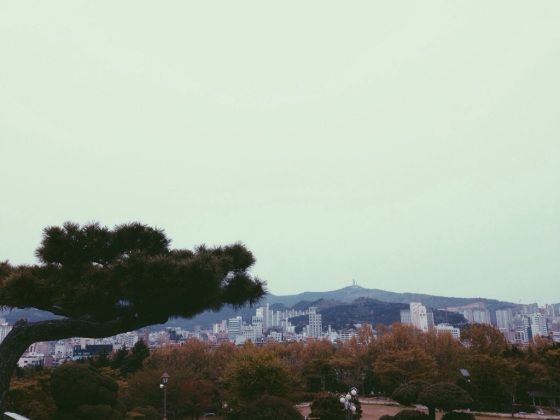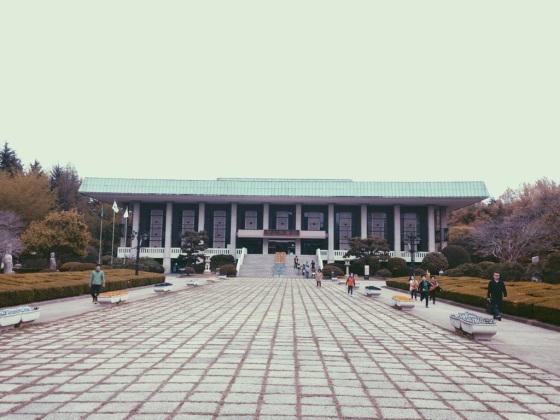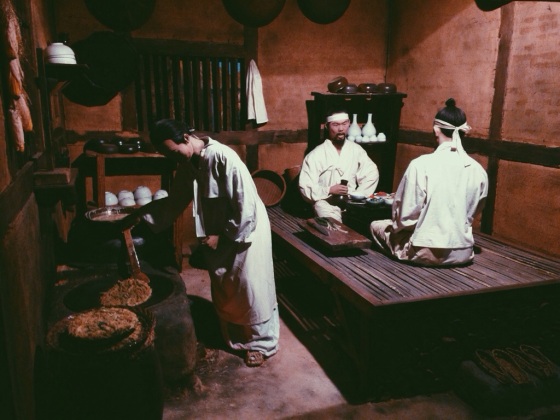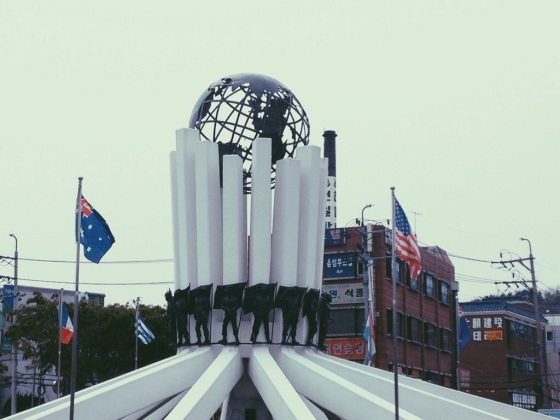This is a Busan Ex-Pat City Guide post. Check out the rest of my list here.
Photos by Jess Sternberg (go check her Instagram out here) and the Korean Tourism Organization.
Blogging about the Busan Museum of Art is a stark reminder about how put together I was not upon arrival in Korea. I visited the museum during the second weekend of September – a whole eight and a half months ago! Oy vey. Blame the late blog post on a totally “blissed out, lazy, end of summer 2013” Dylan.
I’m usually pretty ambivalent about museums on the whole. During my summer 2010 trip to Europe, I spent four hours at the Jüdisches Museum in Berlin. It was a thoroughly curated museum, with an excellent exhibit on Jews in comic books. However, I was so overloaded with information that upon departure from Berlin, everything had left my brain. I was not a sponge that summer for anything except World Cup soccer and beer.
This time around, during my year in Busan, I was excited to take in some Eastern-inspired works of art. Given that the Busan Museum of Art is the penultimate subway stop on my journey to work everyday, I figured this would be a good place to start. In addition, Jess and Maddie had their lovely friends Maritza and Steph visiting, and it seemed like a positively cultured way to introduce the girls to the city.
The Busan Museum of Art had some pretty excellent elements. First of all, it was free entrance (great news for the frugal). The complex itself is large, modern, and well-maintained (as it should be – it was only opened in 1998). The museum has five exhibition halls with hardwood floors throughout, along with archives and interactive learning rooms. The exhibits didn’t feel too overwhelming – the average person (read: me) could enter any given section and feel comfortable identifying general themes and representations.
When the girls and I visited, the main exhibit was titled The Art of Prayers, featuring pieces of art donated by the Korean-Japanese artist Ha Jung-Woong. The exhibit consisted of three different sections: Prayers, Evidence, and Happiness. Each section hoped to represent regret and despair, record “art as historic evidence”, and show “art which provides happiness”, respectively. The section I remember the best was Prayers, which featured a series of woodcuts titled “The Story of Hanaoka”. These vivid reenactments of the uprisings and massacres at the Hanaoka mine in 1945 were particularly realistic and brutal, as well as an exercise in gratitude on my part.
In addition, there were two exhibits by Kim Bong Tae (titled “Accumulation”) and Shin Sang Ho (tilted “Final Frontier”). The Kim Bong Tae exhibit was almost Warholian, but in a totally nondescript way (read: stacked, differently coloured boxes). The Shin Sang Ho exhibit was slightly more interesting, with bright, ceramic sculptures and airplanes inspired by “the unknown world depicted by Star Trek screenwriter Eugene Roddenberry”.
The exhibit we enjoyed the most was the one designed for children (obviously). We entered a dark room, and were immediately delighted when a series of colourful projections began parading about the walls. An older Korean man approached us afterwards to inform us that his young daughter had drawn the pictures and he had turned them into projections. This room of projections was easily the best part of the museum. We joked about the room just needing some EDM to make it a real party.
My trip to the Busan Museum of Art was perhaps more of an exercise in taking derpy photos with my friends than a truly cultural experience. That said, I feel like I did gain some real exposure to different forms of Korean art during my two hour visit to the museum, which was my original goal anyway. You don’t have to remember it all, you just have to appreciate it all.
Directions
To get to the Busan Museum of Art, take the Green Line on the Busan Subway (Line 1) to the Busan Museum of Art Station (stop 205). Go out exit 5 and walk straight for about two minutes. The museum will be right in front of you.













